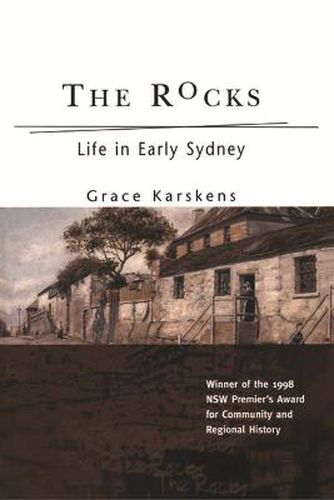Readings Newsletter
Become a Readings Member to make your shopping experience even easier.
Sign in or sign up for free!
You’re not far away from qualifying for FREE standard shipping within Australia
You’ve qualified for FREE standard shipping within Australia
The cart is loading…






A vivid recreation of the origins of the Sydney suburb of the Rocks that illuminates the real lives of the convicts and ex-convicts in the first forty years of white settlement.
The Rocks is Sydney’s earliest surviving neighbourhood. Grace Karskens builds up a vivid picture of the lives of its earliest white inhabitants. A wealth of historical documents, pictures, maps and archaeological evidence allows her to recover the words and gestures, tastes and habits, aspirations and fears, of the dealers, publicans, labourers, artisans, watermen, washerwomen, servants and prostitutes who lived there.
What sort of town did these people make? What did it look like? How did they treat their neighbours? And what of other human relations-how did men and women behave sexually? What did they think was ‘moral’ behaviour? What were their marriages like? How did they bring up their children?
Grace Karskens shows it was a place very different from the usual images of a brutal ‘gaol colony’- it was, rather, a preindustrial town, a face-to-face society, marked more by movement and opportunity, dialogue and negotiation than by coercion, discipline and punishment.
$9.00 standard shipping within Australia
FREE standard shipping within Australia for orders over $100.00
Express & International shipping calculated at checkout
Stock availability can be subject to change without notice. We recommend calling the shop or contacting our online team to check availability of low stock items. Please see our Shopping Online page for more details.
A vivid recreation of the origins of the Sydney suburb of the Rocks that illuminates the real lives of the convicts and ex-convicts in the first forty years of white settlement.
The Rocks is Sydney’s earliest surviving neighbourhood. Grace Karskens builds up a vivid picture of the lives of its earliest white inhabitants. A wealth of historical documents, pictures, maps and archaeological evidence allows her to recover the words and gestures, tastes and habits, aspirations and fears, of the dealers, publicans, labourers, artisans, watermen, washerwomen, servants and prostitutes who lived there.
What sort of town did these people make? What did it look like? How did they treat their neighbours? And what of other human relations-how did men and women behave sexually? What did they think was ‘moral’ behaviour? What were their marriages like? How did they bring up their children?
Grace Karskens shows it was a place very different from the usual images of a brutal ‘gaol colony’- it was, rather, a preindustrial town, a face-to-face society, marked more by movement and opportunity, dialogue and negotiation than by coercion, discipline and punishment.